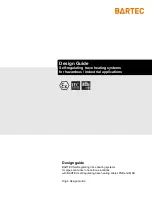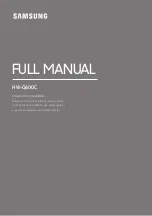
Chapter 3: DSM V6000 Hardware Appliance
Configuring a V6000 Appliance
DSM Installation and Configuration Guide
Copyright 2009 - 2020 Thales Group. All rights reserved.
55
Device State
MTU
Mediatype
Speed
eth0
UP
1500
copper
auto
eth1
UP
1500
copper
auto
Device State
MTU
Mode
bond0
UP
1500
0
Ethernet Channel Bonding Driver: v3.7.1 (April 27, 2011)
Bonding Mode: load balancing (round-robin)
MII Status: down
MII Polling Interval (ms): 100
Up Delay (ms): 0
Down Delay (ms): 0
SUCCESS: show ip link
6. To disable or break up a bonded NIC device, you can use either the
delete
or
flush
command. The
delete
command will only delete a specific IP address (multiple can be assigned) and
flush
will clear all assigned IP
addresses.
0003:network$ ip address delete <ip_address>/<subnet_mask> dev bond0
or
0003:network$ ip address flush bond0
Routes that are associated with this bonded NIC device will also be deleted.
Bonding driver modes
The modes specify bonding policies. Some options for certain modes are configurable (the
transmit hash policy
for
bonding modes 2 and 4, and the
updelay
for bonding mode 6), while the others take the default values for those
modes, except for the
miimon
setting.
The transmit hash policy for bonding modes 2 and 4, is used for slave selection in these modes. To set the transmit
hash policy for mode 2 or 4, use the
ip link set command
, for example;
0004:network$ ip link set bond0 mode 2 xmithashpolicy 3
To view the changes, use the
ip link show
command;
Device State
MTU
Mediatype
Speed
eth0
UP
1500
copper
auto
eth1
UP
1500
copper
auto
Device
State
MTU
Mode
bond0
UP
1500
2
Ethernet Channel Bonding Driver: v3.7.1 (April 27, 2011)
Bonding Mode: load balancing (xor)
Transmit Hash Policy: 3 (0)
MII Status: down
MII Polling Interval (ms): 100
Up Delay (ms): 0
Down Delay (ms): 0
The
miimon
setting specifies the MII link monitoring frequency in milliseconds, which determines how often the link
state of each slave is inspected for link failures. The
miimon
setting has a value of 100 instead of the default value of 0.
l
To see the supported Bonding driver modes, see
Appendix E: "Bonding Driver Modes" on page 173
.
















































